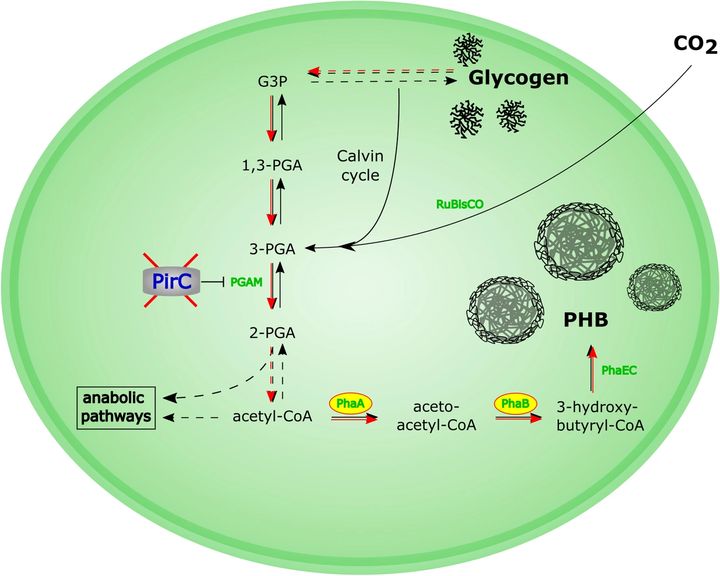
Researchers have found a way to persuade cyanobacteria to produce larger quantities of a certain thermoplastic.
Scientists at Eberhard-Karls-Universität Tübingen have been investigating how cyanobacteria — also known as algae — are able to naturally produce PHB, or Polyhydroxybutyrate. This is a material that is similar to polypropylene, but will naturally decompose after a time.
These cyanobacteria produce PHB when under stress, but in practice the quantities produced are small and irrelevant for industrial use.
However, the researchers found they could inhibit an internal limiting mechanism within the cyanobacteria that controls the amount of PHB produced. Through genetic manipulation they created cyanobacteria that could produce much more PHB. They explain:
“We have created a new strain that lacks the regulatory protein PirC (product of sll0944), which exhibits a higher activity of the phosphoglycerate mutase resulting in increased PHB pools under nutrient limiting conditions. To further improve the intracellular PHB content, two genes involved in PHB metabolism, phaA and phaB, from the known producer strain Cupriavidus necator, were introduced under the control of the strong promotor PpsbA2. The resulting strain, termed PPT1 (ΔpirC-REphaAB), produced high amounts of PHB under continuous light as well under a day-night regime. When grown in nitrogen and phosphorus depleted medium, the cells produced up to 63% per CDW. Upon the addition of acetate, the content was further increased to 81% per CDW. The produced polymer consists of pure PHB, which is highly isotactic.”
This is a very notable discovery, as it could revolutionize the manufacture and use of many plastic materials. Today most plastics are produced using petroleum, which when burned releases CO2 into the atmosphere, as well as polluting the surface of the earth and the sea. Today’s common plastics tend to not decompose, and typically they will gradually break down into micro-plastics that can be absorbed by the food chain.
With increasing interest in eco-friendly products, the cyanobacteria approach might eventually be used as a means to create vast quantities of decomposable plastics. These could be used, for example, as disposable food containers, which otherwise would use immortal plastics.
As PHB turns out to be a thermoplastic, it could theoretically be made into a filament for 3D printing. While the prints made from PHB might not be durable for mechanical applications, there are plenty of 3D print applications that could use this type of material.
I found one study (“Study on the 3D printability of poly(3-hydroxybutyrate-co-3-hydroxyvalerate)/poly(lactic acid) blends with chain extender using fused filament fabrication“) where PHB was tested as a material for FFF 3D printing, and they found certain additives were necessary to ensure adequate 3D printing properties. They explain:
“The studied blends suffered from poor 3D printability due to differences in compatibility and low thermal resistance. These shortcomings were addressed by incorporating a functionalized styrene-acrylate copolymer with oxirane moieties as a chain extender (CE). To enhance mechanical properties, the synergistic effect of 3D printing parameters such as printing temperature and speed, layer thickness and bed temperature were explored.”
In recent years there has been a push towards more eco-friendly 3D print materials, and even the larger chemical companies are starting to lean in that direction. On a smaller scale there have been multiple attempts at producing eco-friendly 3D printer filament (and one even made from algae). Sometimes these use recycled material, but that has proven problematic and of limited ecological benefit.
With the availability of naturally-produced decomposable PHB, there could be a rich source for truly eco-friendly 3D printer filament in the future.
Via BioMed Central
